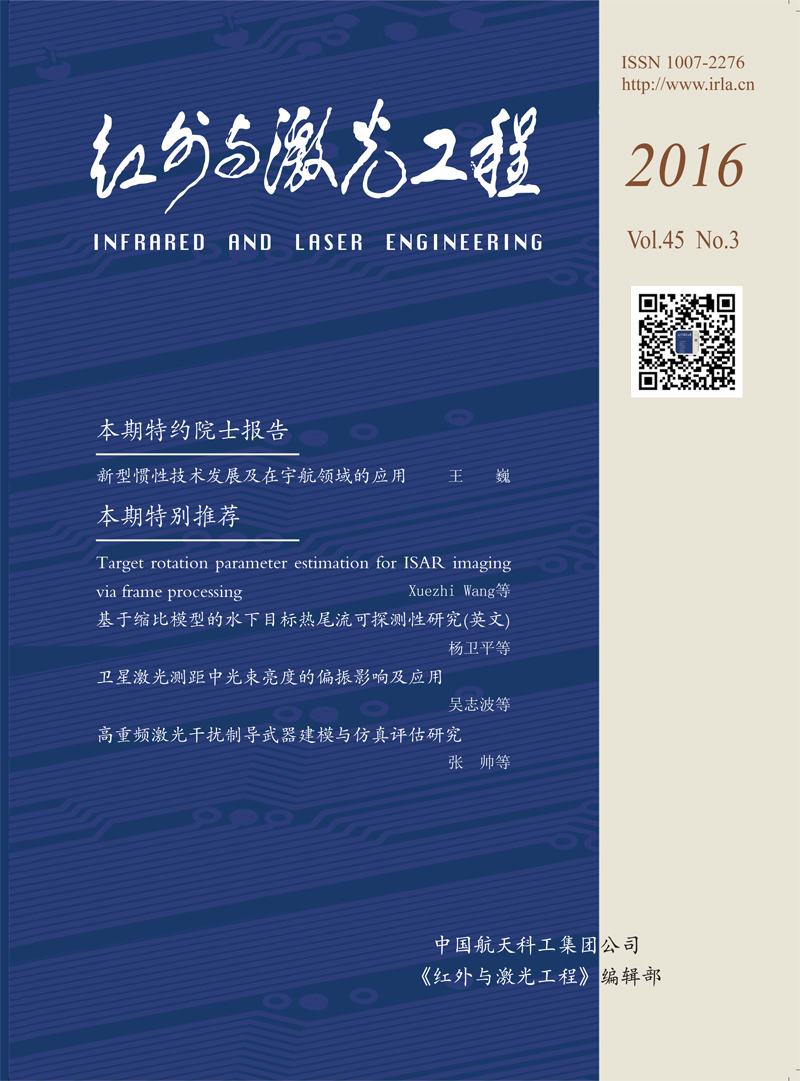Guo Junli, An Yuan, Li Zongxuan, Li Kai. Bonding technique of mirror components in space camera[J]. Infrared and Laser Engineering, 2016, 45(3): 313002-0313002(7). doi: 10.3788/IRLA201645.0313002
| Citation:
|
Guo Junli, An Yuan, Li Zongxuan, Li Kai. Bonding technique of mirror components in space camera[J]. Infrared and Laser Engineering, 2016, 45(3): 313002-0313002(7). doi: 10.3788/IRLA201645.0313002
|
Bonding technique of mirror components in space camera
- 1.
Changchun Institute of Optics,Fine Mechanics and Physics,Chinese Academy of Sciences,Changchun 130033,China;
- 2.
University of Chinese Academy of Sciences,Beijing 100049,China
- Received Date: 2015-07-06
- Rev Recd Date:
2015-08-10
- Publish Date:
2016-03-25
-
Abstract
In order to ensure the surface form precision of a mirror whose caliber is 320 mm changes as small as possible before and after bonding, while static and dynamic stiffness of the mirror components meet the requirements, bonding technique of primary mirror in space camera was studied. Firstly, specific bonding parameters of six bonds and round bonds were achieved. Then, the finite element analysis for two bonding options was carried out to analyze static stiffness and optical properties. Finally, when the mirror's surface form precision was 0.030(=632.8), the surface form precision of the mirror was tested. Besides, vibration test of mirror components was conducted. Analysis and experiment results indicate that after using six bonds option to assemble the mirror components, its first order frequency is 144.194 Hz and static and dynamic stiffness meet the requirements. Compared to round bonds option, the surface form precision of the mirror improves 13.5%. This results mean that the six bonds option is better for bonding the mirror whose caliber is near 320 mm.
-
References
|
[1]
|
Yang Liang, Li Zhaohui, Qiao Ke. Support structure and saaembling technique of a space mirror[J]. Infrared and Laser Engineering, 2013, 42(12):3277-3282. (in Chinese)杨亮, 李朝辉, 乔克. 某空间反射镜支撑装调技术[J]. 红外与激光工程, 2013, 42(12):3277-3282. |
|
[2]
|
Tan Jinguo, He Xin, Fu Liangliang. Support technique in centre of minitype mirror[J]. Infrared and Laser Engineering, 2010, 39(6):1070-1074. (in Chinese)谭进国, 何欣, 付亮亮. 小型反射镜中心支撑技术[J]. 红外与激光工程, 2010, 39(6):1070-1074. |
|
[3]
|
Dong Deyi, Li Zhilai, Li Ruigang, et al. Simulation and experiment of influence of adhesive curing on reflective mirror surface[J]. Opt Precision Eng, 2014, 22(10):2698-2707. (in Chinese)董得义, 李志来, 李锐刚, 等. 胶层固化对反射镜面形影响的仿真与试验[J]. 光学精密工程, 2014, 22(10):2698-2707. |
|
[4]
|
Bayar M. Lens barrel optomechanical design principles[J]. Optical Engineering, 1981, 20(2):181-186. |
|
[5]
|
Fan Zhigang, Chang Hong, Chen Shouqian. Design of bonding layer in lens athermal mount[J]. Opt Precision Eng, 2011, 19(11):2573-2581. (in Chinese)范志刚,常虹,陈守谦. 透镜无热装配中粘结层的设计[J]. 光学精密工程, 2011, 19(11):2573-2581. |
|
[6]
|
Paul R Y. Opto-mechanical Systems Design[M]. Beijing:China Machine Press, 2008:397-398. (in Chinese) Paul R Y. 光机系统设计[M]. 北京:机械工业出版社, 2008:397-398. |
|
[7]
|
Vukobratovich D. Bonded mounts for mall mryogenic optics[C]//SPIE, 2000, 4131:228-239. |
|
[8]
|
Gregory J Michels, Victor L Genberg, Keith B Doyle. Finite element modeling of nearly incompressible bonds[C]//SPIE, 2002, 4771:287-295. |
|
[9]
|
Han Xu, Wu Qingwen, Dong Deyi, et al. Application of RTV adhesive modeling to structure analysis of reflective mirror[J]. Opt Precision Eng, 2010, 18(1):118-125. (in Chinese)韩旭, 吴清文, 董得义, 等. 室温硫化胶层建模在透镜结构分析中的应用[J]. 光学精密工程, 2010, 18(1):118-125. |
-
-
Proportional views

-









 DownLoad:
DownLoad: